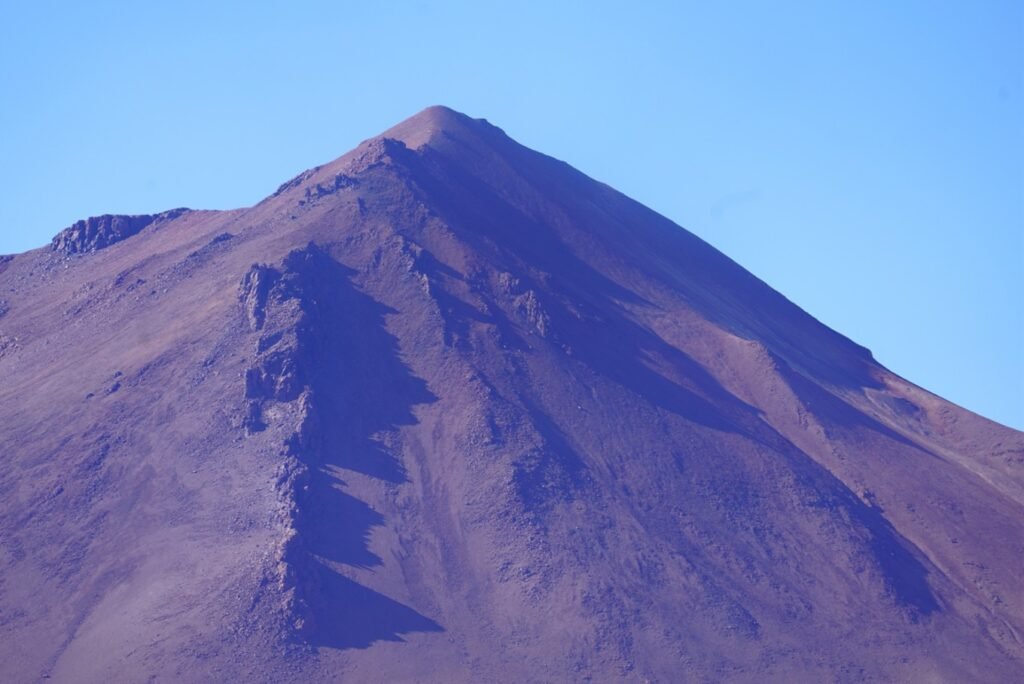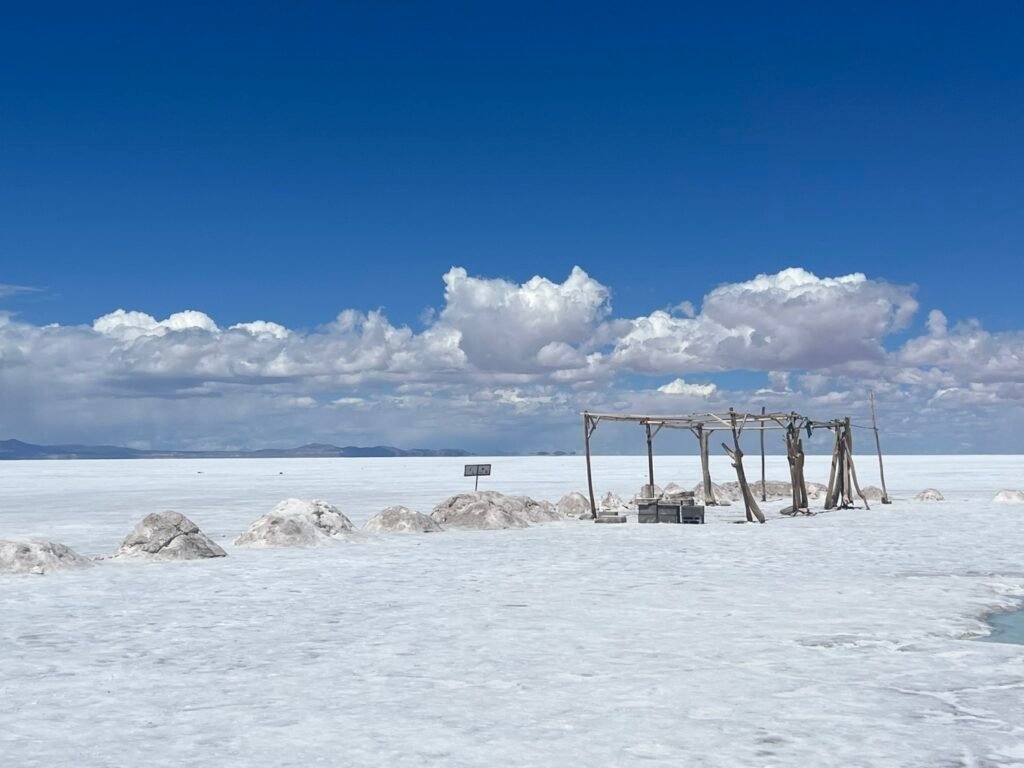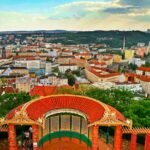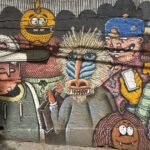The Uyuni Salt Flats in Bolivia are widely known as the original “Mirror of the Sky,” regarded as sacred by thousands of travelers. Although other places have since adopted the same nickname, none can match the authenticity of Uyuni. I did my homework before the trip and found that November is the tail end of the dry season. However, there are still small areas on the salt flats with shallow water, just enough to create the mirror effect. Although it might not compare to the peak conditions I saw in January, I figured it was better than nothing.
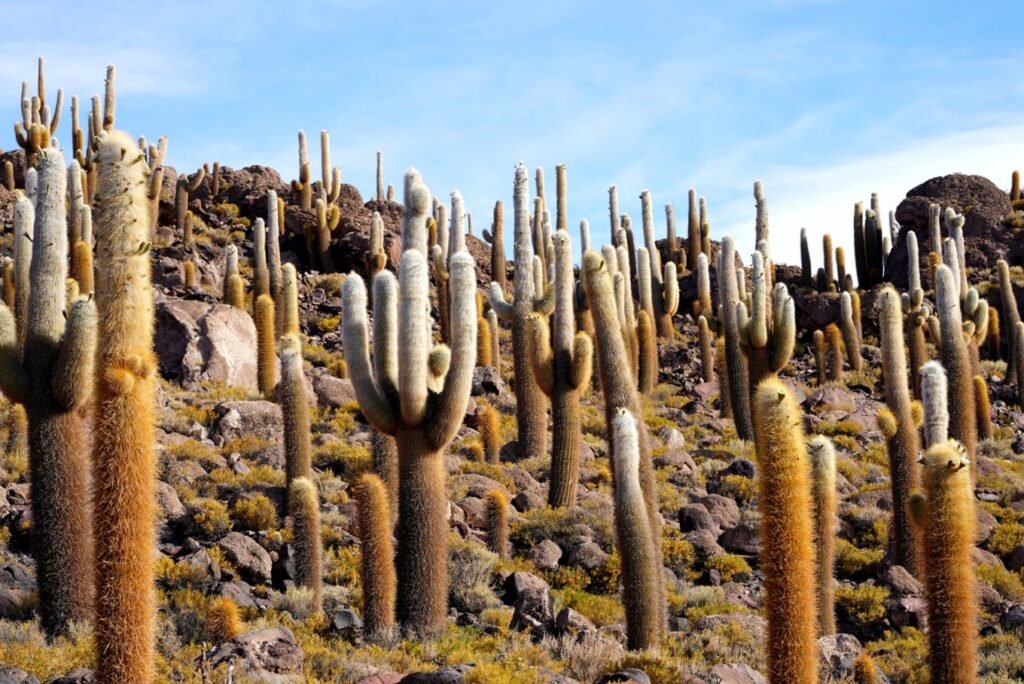
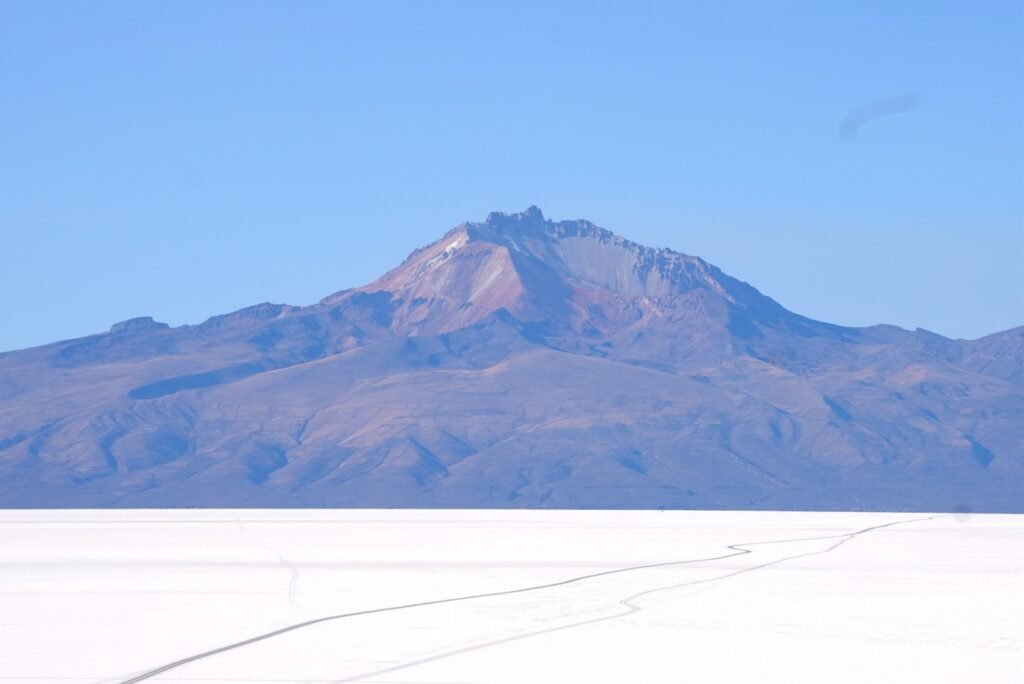
The three-day tour to the Birdwatcher’s Paradise includes a standard salt flats tour on the first day. Since I’d already visited some of the stops, like the Train Cemetery and the local market, I stayed in the car to rest and conserve energy for the second day’s high-altitude journey, which would take us to 5,000 meters. During the rainy season, it’s impossible to visit Isla Incahuasi (Cactus Island) due to deep water, so I was glad to finally explore it this time. While photos of the island’s giant cacti never seemed impressive to me before, seeing them in person was fascinating. These towering cacti were much taller than I expected, with some hundreds of years old. The soft afternoon light gave the stones and cacti a beautiful glowing outline.
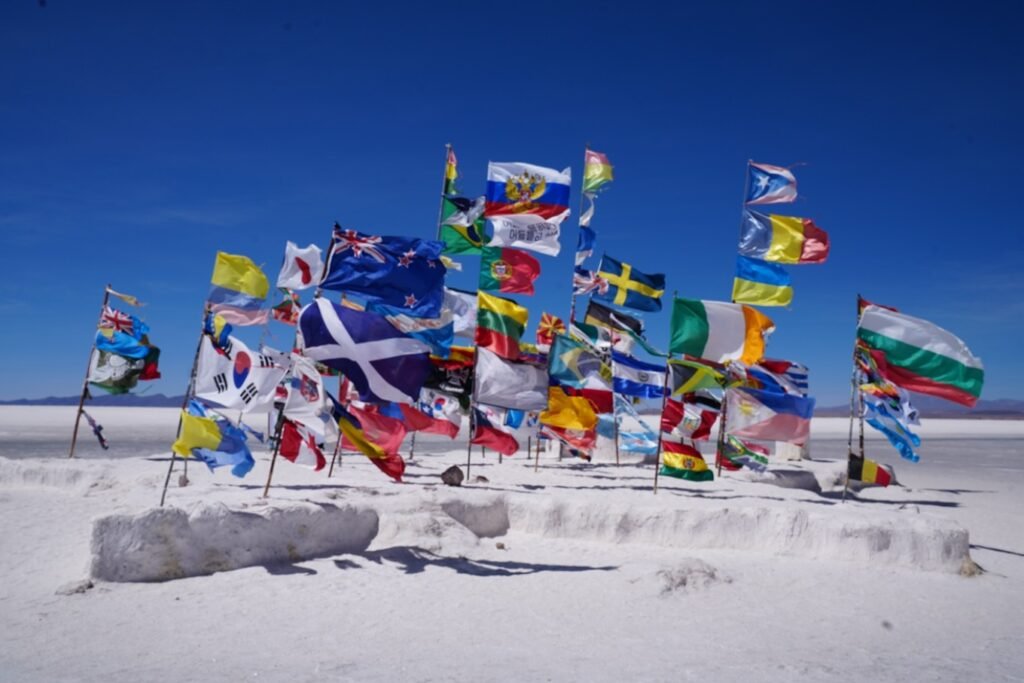
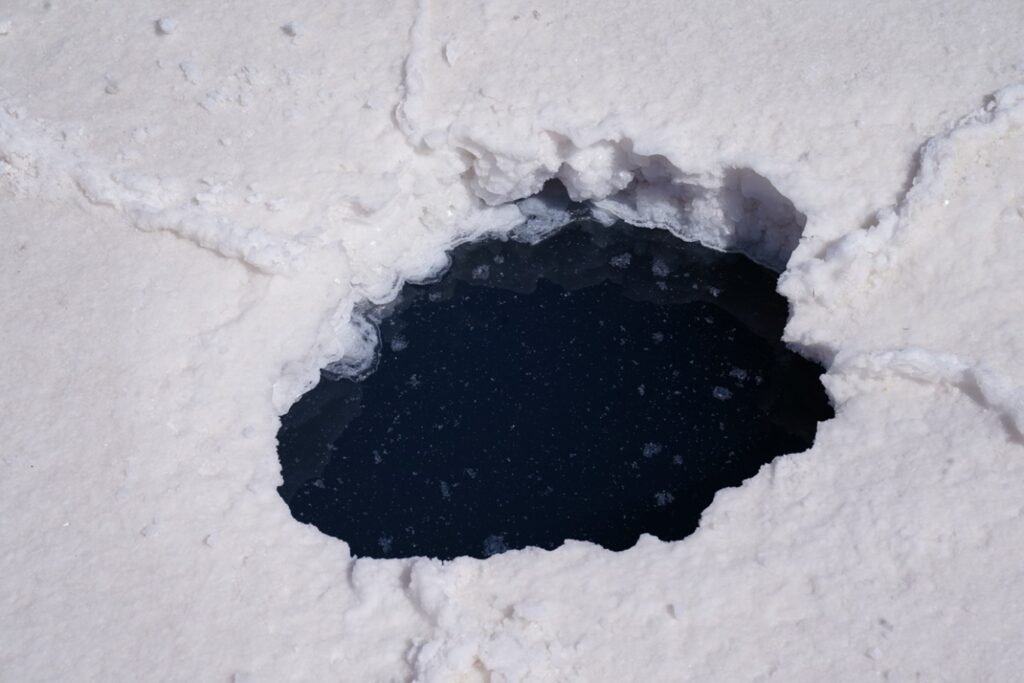
By evening, we drove toward the southwestern camp, the final village before entering the Birdwatcher’s Paradise. On one-day tours, visitors typically stay on the reflective lake surface to wait for the sunset. Unfortunately, I had to schedule a separate sunset tour for my fourth day in Uyuni.
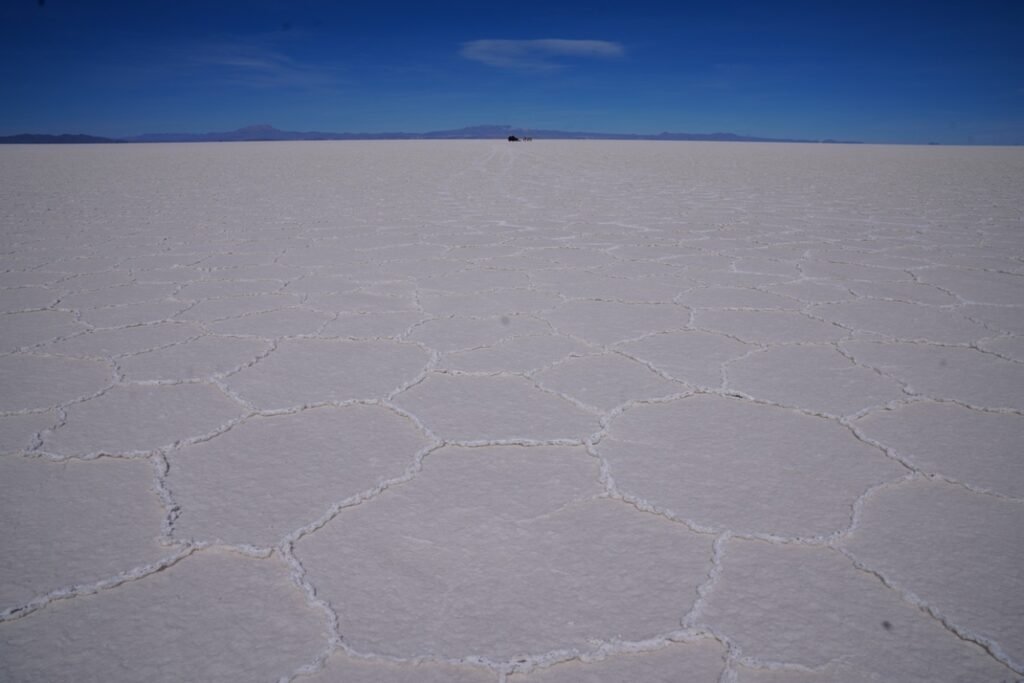
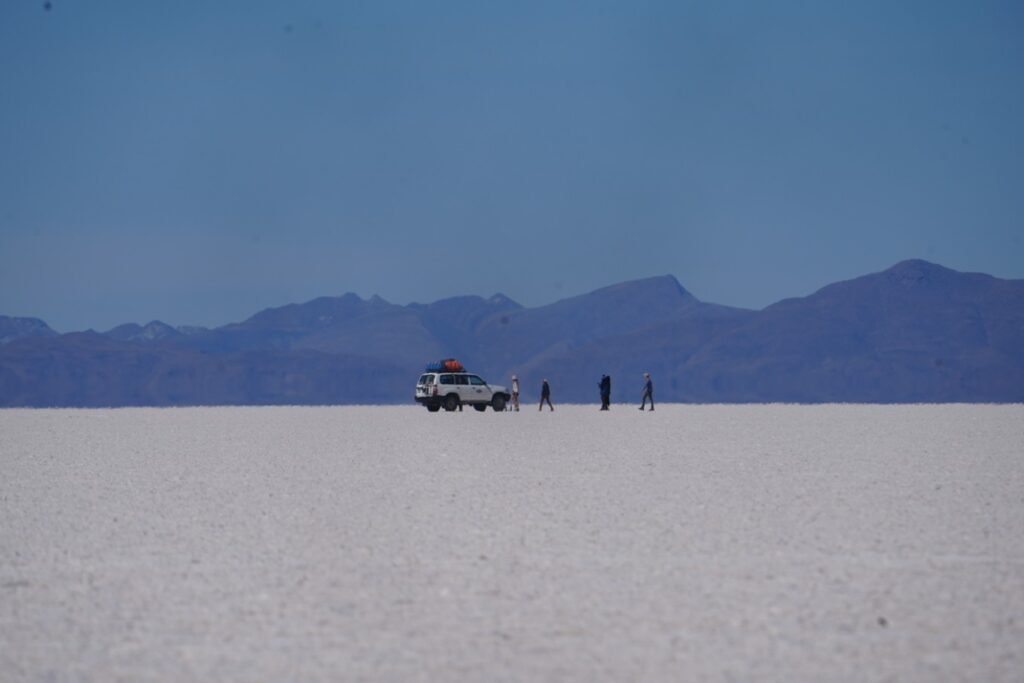
Booking this tour wasn’t without complications. Due to the limited water coverage and reduced mirror effect, there weren’t many participants for sunrise and sunset tours. When I booked the tour in the morning, the agency made a mistake. At 4 p.m., when I arrived as planned, they told me the group I was supposed to join had already left from their hotel with a private vehicle. If I wanted to go, I would have to hire my own vehicle and pay half the private car fare, about the cost of two and a half regular tours. I negotiated to pay double the regular fare, arguing that the agency was at fault, and asked them to contact the manager. A few minutes later, the manager arranged for me to join a group of four young Koreans in a private vehicle that was on its way. They had come prepared with matching outfits for a photo shoot. I assured them I wouldn’t interfere with their plans, explaining that this was my second visit and my primary goal was to capture some sunset photos.
When we reached the shallow water area around 5 p.m., about twenty to thirty SUVs were scattered across the surface, with each car carrying five to seven tourists. Most seemed to be wrapping up their day tours with this final stop. I tried to set up a time-lapse of the sunset, but there were always a few vehicles and tourists in the frame, posing and capturing their own memories.
Even though the salt crystals in the water slightly marred the mirror effect, and the presence of other tourists added distractions, the essence of the Mirror of the Sky was still unmistakably present. The western sky was particularly stunning, with the clouds shifting dramatically before and after sunset. At one point, a band of dark clouds spread downward like ink dissolving in water, mirrored perfectly on the reflective surface below—a rare and breathtaking sight.
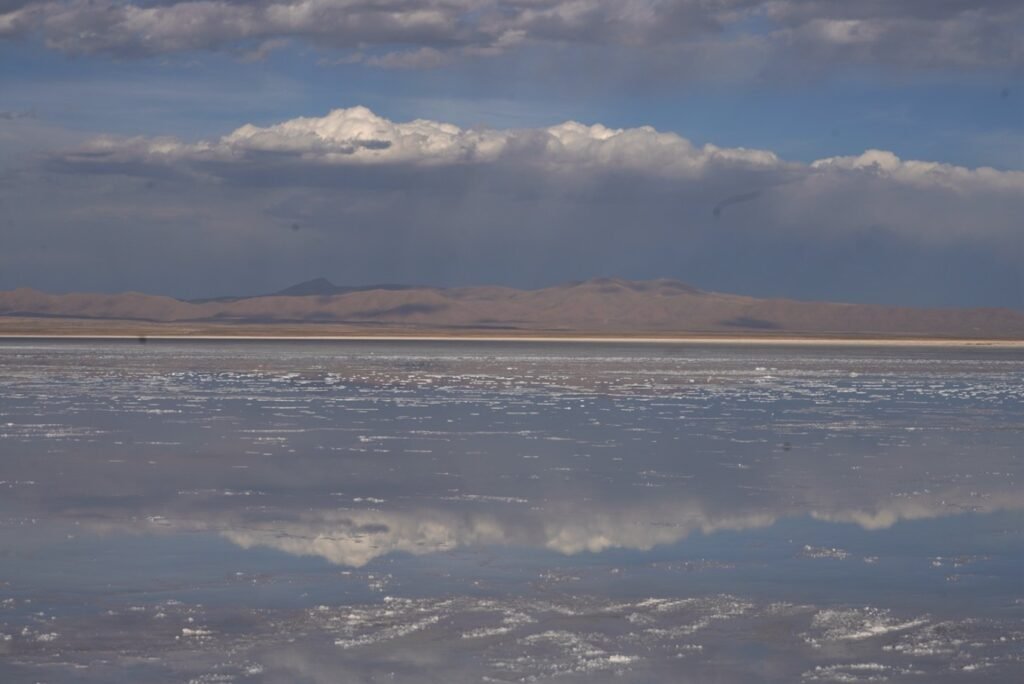
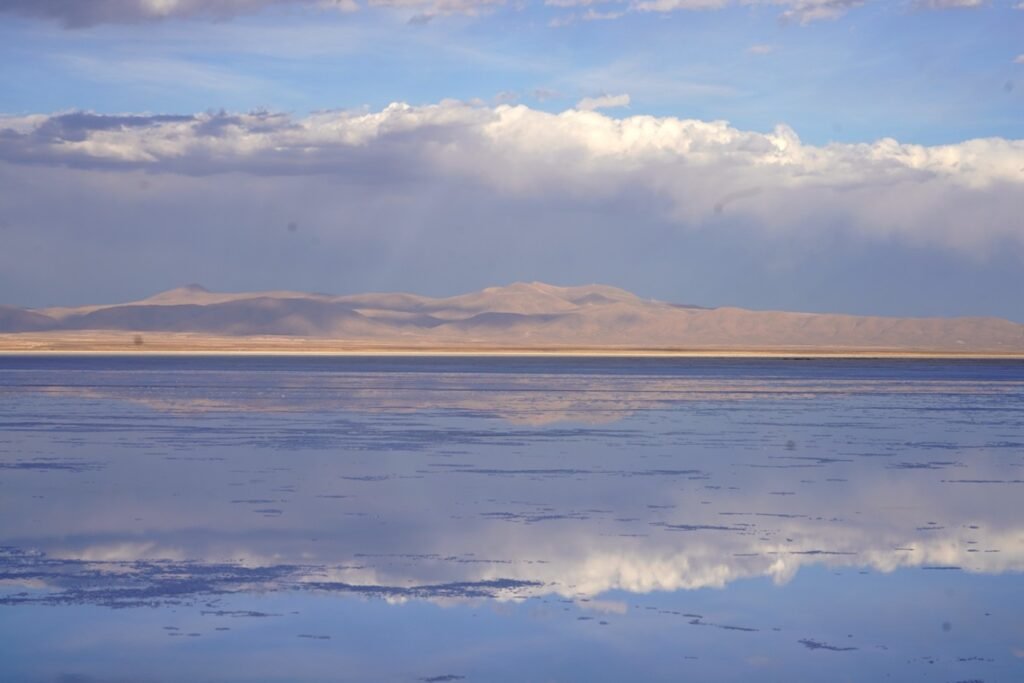
As a photography enthusiast, I often focus on sunrises and sunsets, but I had never captured a complete reflection of the sun with a telephoto lens until now. Unfortunately, even though we found a water-covered section, distant mountain ranges blocked the perfect alignment of the sunset with its reflection.
After the sun dipped below the horizon, the clouds continued to shift, and a few stars began to peek through. Our driver and guide busied himself with helping the Korean group capture their planned photo shoot. It was clear that he had mastered techniques for photographing people under the night sky, blending creative tricks with starlit backgrounds. Although I was eager to return for dinner and prepare for my early departure the next morning, the guide patiently followed through with the entire photo session, even as the changing clouds eventually obscured the stars entirely.
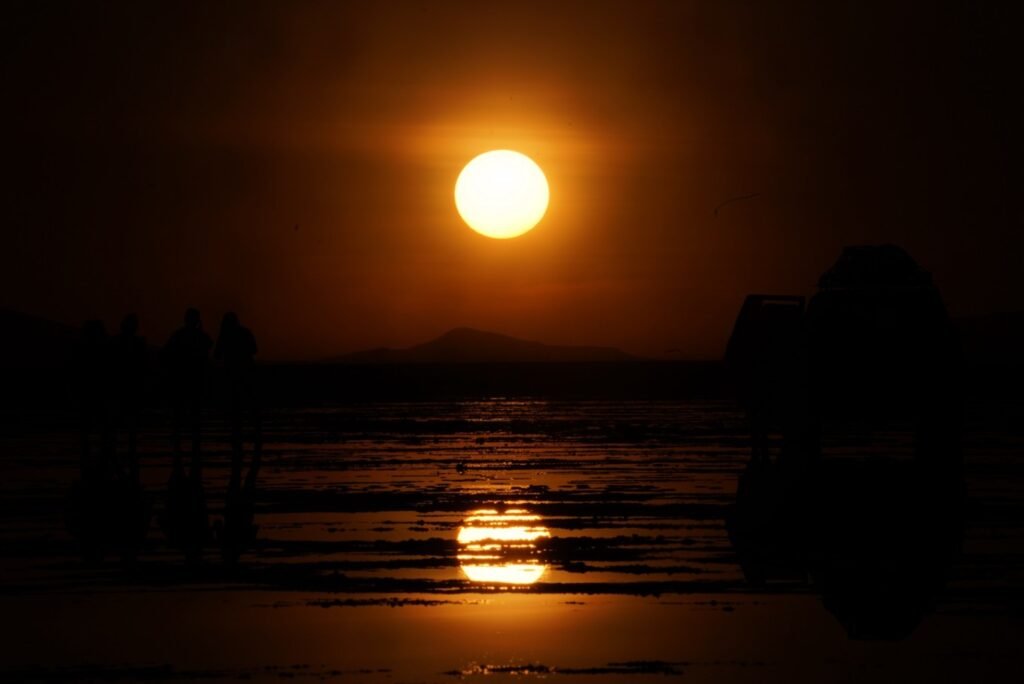

The Birdwatcher’s Paradise
Most people travel to Bolivia for the renowned Uyuni Salt Flats, also known as the “Mirror of the Sky.” However, some visitors take the opportunity to explore the vast area southwest of Uyuni, covering thousands of square kilometers. This region features several volcanoes around 6,000 meters high, colorful lakes, geysers, and snow-capped mountains, with altitudes ranging between 4,000 and 5,000 meters.
The southern part of this area belongs to a national park with a complex name, bordering Chile and forming part of a cross-border tourism route that connects Bolivia’s park with Chile’s national parks and other scenic areas. This entire landscape doesn’t seem to have a unified or famous name, but to me, the essence of this region lies in the flamingos inhabiting the high-altitude lakes. These beautiful birds, thriving at over 4,000 meters in harsh conditions, truly earn the title Birds of the Sky.
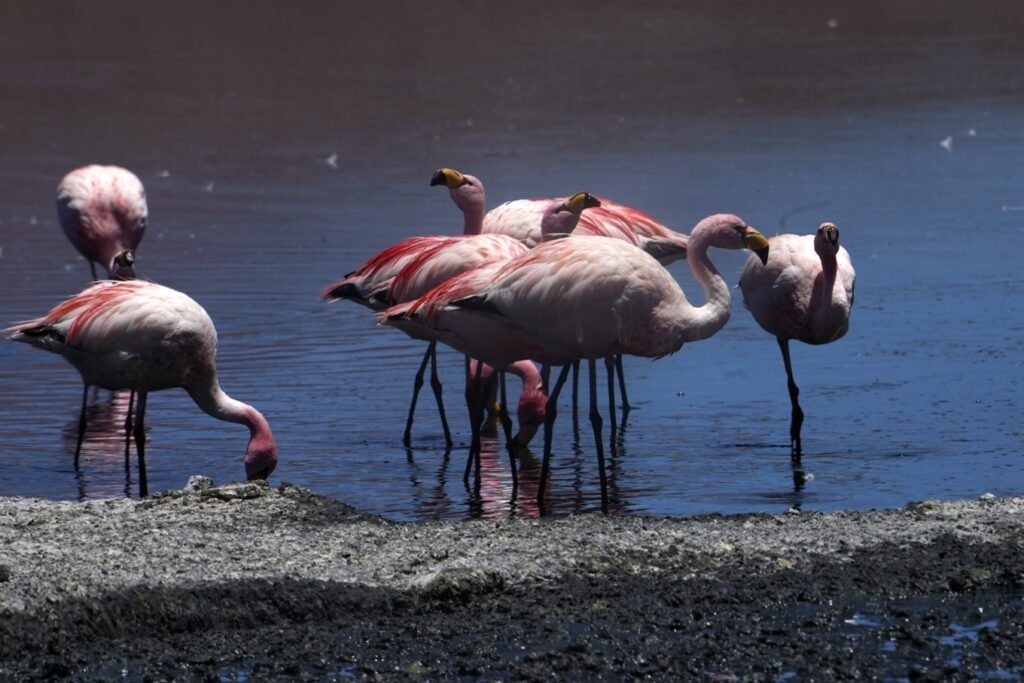

Above 4,000 meters, there are no permanent human settlements. Only basic accommodations built for tourists exist here, with no infrastructure, natural dirt roads, and at times only faint tire tracks serving as paths. The weather is unpredictable, communication networks are unavailable, and the mountains feature colorful slopes, while lakes frequently display varying hues. This remote and breathtaking region deserves to be called the Birdwatcher’s Paradise.
Upon arriving in Uyuni in the evening, I immediately sought out a travel agency to book a three-day tour, two of which would be spent exploring the Birdwatcher’s Paradise. We opted for a standard group tour for safety, as it involved two vehicles traveling together, making the experience more secure and reasonably priced.
The first day of the tour was dedicated to exploring the salt flats, with an overnight stay in San Juan, the last inhabited village before venturing into the Birdwatcher’s Paradise. The accommodation was decent, similar to Uyuni’s family-run guesthouses. I woke up early, greeted by a view of distant mountains from the door. One peak, a cone-shaped volcano, stood out. Our guide later confirmed it was a well-known volcano marking the border between Bolivia and Chile.
For the first hour or two after departure, we drove toward the volcano, later circling it from the north to the south, making brief stops along the way. From the southern side, we could see white smoke rising from the peak, and the guide explained that it was on the Chilean side.


My primary focus, however, was the flamingos, and I kept asking the guide about them. Around 11:30 a.m., we arrived at the first lake. As we rounded a bend in the mountain road, the sight of the lake in the distance took my breath away. Surrounded by brown peaks, the lake’s irregular surface stood out with its striking colors. Roughly 70 to 80 percent of the lake bed was white, a result of the long dry season, while the remaining blue waters shimmered under the clear sky. Among the patches of blue were clusters of pink—undoubtedly flamingos.
The plan was to walk along the shore for about 300 to 400 meters, with the vehicles waiting at the other end. After half an hour, we reached another lake, where we would have lunch. A few simple buildings clustered along the shore, most serving as lakeside restaurants. Though the buildings were basic, the view was truly spectacular.
Lunch was flexible, giving me plenty of time to photograph the flamingos. Although the midday light wasn’t ideal for photography, I didn’t want to miss the chance to capture these beautiful birds. Even though I knew I wasn’t getting their best colors, it was still a joy to photograph them.
Later in the afternoon, we passed by more lakes, but fatigue seemed to take over, and the other passengers didn’t even ask to stop. Around 5 p.m., we arrived at Laguna Colorada, also known as the Red Lake, where we purchased national park tickets. With the sun setting, the calm waters of the lake provided perfect conditions for photography.
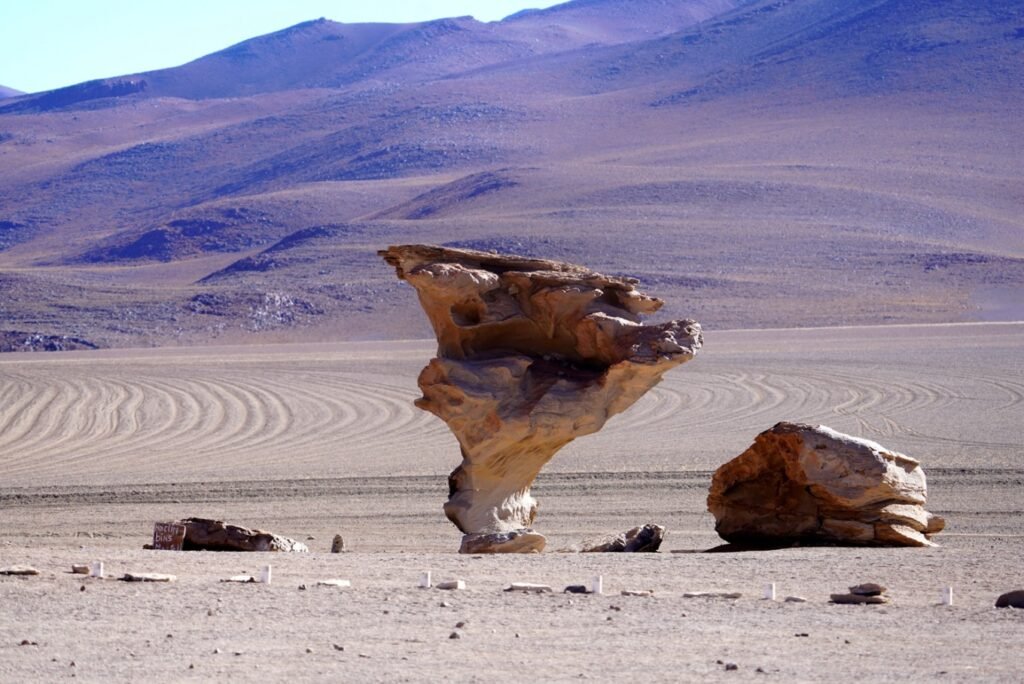
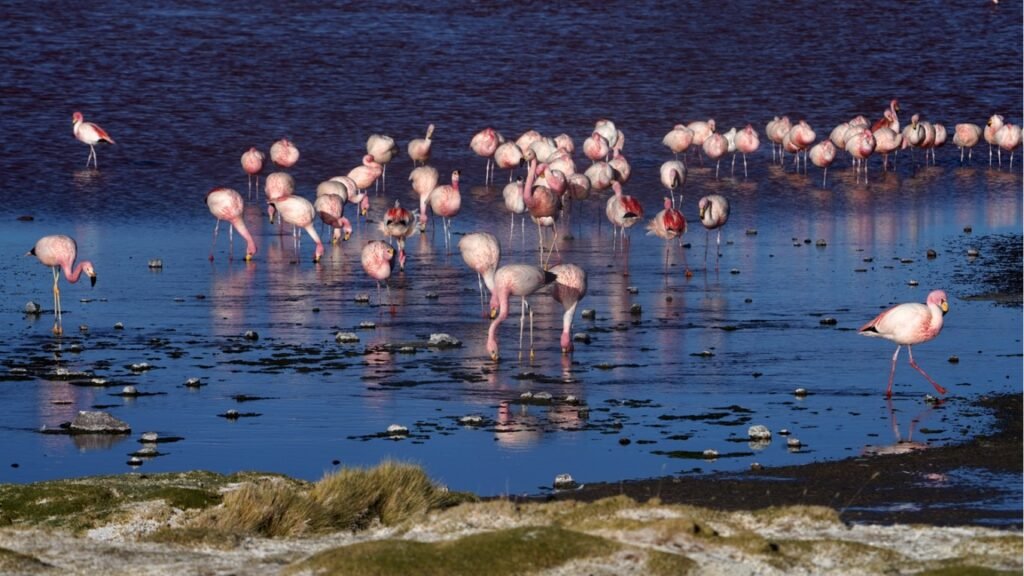
Flamingos were feeding in the shallow waters close to the shore, making them easy to observe and photograph. A buffer zone of 20 to 40 meters along the shore ensured that tourists wouldn’t disturb the birds, but a long lens was more than enough to capture their beauty.
From a higher vantage point, the lake’s large patches of deep red were visible, contrasting with the turquoise water near the shore where the flamingos stood. In the golden light of the sunset, the birds’ feathers displayed vibrant shades of orange and rose, reflected in the water like a painting on a palette.
The scene was alive with movement. Most of the flamingos kept their heads down, feeding as they moved along the shore. Some younger birds seemed to be resting in the water, while occasionally, a flamingo would glide gracefully in from a distance, landing softly and tucking its wings.
While the other group members seemed less interested in the flamingos, I found myself still photographing them long after everyone else had stopped. Fortunately, our guide stayed with me, so I didn’t feel guilty about delaying the group.
As night fell, we continued to a campsite within the national park, arriving after about 20 minutes. The campsite was much larger than I expected, with dozens of simple lodges. Although the buildings were modest, the one we stayed in had a bathroom, a kitchen-dining area, and solar-powered lights that stayed on throughout the night.
On the third day, we woke up at 4:30 a.m. and departed at 5:00 a.m. to visit the geysers, which are best seen at sunrise. Afterward, we stopped at a hot spring where visitors could take a dip. This spring was located at the upper reaches of a series of lakes. Along the shore of another lake, we encountered more flamingos, their vibrant colors enhanced by the steam rising from the warm waters, creating an almost ethereal scene.
I quickly asked the guide to stop, but since we were on a narrow mountain road with only one lane in each direction and no shoulder, we couldn’t stay long. This location wasn’t part of the scheduled itinerary, so I had to snap a few quick photos before we continued.
After the hot springs, I fell asleep on the bus, only waking up when we reached the final stop, the Green Lake. There were more flamingos on the lake, but they were too far away for close observation. Across the lake, a small group of buildings marked the border between Bolivia and Chile. Two members of our group, a British couple, were planning to cross into Chile from there. Our two vehicles then split up—one to drop off the couple at the border, the other to begin the return journey. We reunited later at the campsite where we had lunch.


Behind the customs post stood a towering volcano, the highest peak in the area, though most of it lies on the Chilean side. At over 4,300 meters above sea level, the mountain didn’t appear particularly imposing.
Though we made a few more stops on the way back, none of them compared to the beauty of the flamingo lakes we had seen earlier. One highlight, however, was when our driver spotted a small animal crossing the road. He jumped out to catch it, and after a lot of effort—especially impressive given the 4,000-meter altitude—he managed to bring it over for us to see and photograph.
We returned to Uyuni just before 6 p.m., utterly exhausted. Everyone was pleased with the guide and driver, happily offering tips and exchanging contact information. The guide arranged for the driver to drop each of us off at our respective hotels, bringing the adventure to a satisfying close.
